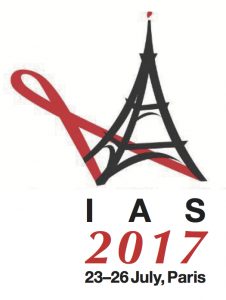Reassuring French data using raltegravir during pregnancy
28 November 2017. Related: Conference reports, Pregnancy, IAS 9th Paris 2017.
Polly Clayden, HIV i-Base
 A presentation from the French Perinatal Cohort at IAS 2017 reported reassuring safety data on raltegravir-exposed pregnancies – including first trimester exposure. [1]
A presentation from the French Perinatal Cohort at IAS 2017 reported reassuring safety data on raltegravir-exposed pregnancies – including first trimester exposure. [1]
This large prospective cohort of children exposed to raltegravir (RAL) in utero found no significant association between first trimester exposure and birth defects.
There is currently no published literature on RAL and birth defects. The largest report is from the Antiretroviral Pregnancy Registry (APR) to January 2017. The APR reports 7 birth defects out of 263 first trimester exposures (2.7%) and no difference with second/third trimester exposure (8/250, 3.2%). [2]
The French Perinatal Cohort (EPF) is a multicentre ongoing, prospective, national cohort, which enrols pregnant HIV positive women delivering in 90 centres throughout France. Children are then followed until they are two years old.
The EPF evaluation included all RAL-exposed pregnancies between 2008 and 2015. Birth defects were defined using the EUROCAT classification.
There were 479 RAL-exposed pregnancies of which 6 (1.3%) resulted in stillbirths and 2 late miscarriages (0.4%). There were 68 (14.2%) preterm deliveries and 10 (2.1%) twin pregnancies. No pregnancies were terminated for birth defects.
Earliest RAL-exposure was in the first trimester for 140 (29.2%) and second/third trimester for 339 (78.8%).
There were 20/479 birth defects for all births: 4.2% (95% CI: 2.4 to 6.0%). And 20/471 among live births: 4.2% (95% CI: 2.4% to 6.1%). The investigators noted that this incidence was similar to that reported in a previous study in EPF for live births exposed to any antiretroviral: 4.4% (95% CI: 4.0 to 4.7%).
The was no significant difference in overall birth defect rates between first trimester and second/third trimester exposure to raltegravir: 5.7% vs 3.5%; OR 1.6 (95% CI: 0.7 to 4.1), p=0.29.
The anomalies did not follow a pattern: 7 heart defects, 5 polydactyly, and 8 other defects.
Follow-up was complete to 24 months for 63% of children at time of analysis.
References:
- Sibiude J et al. Evaluation of the risk of birth defects among children exposed to raltegravir in utero in the ANRS-French Perinatal Cohort EPF. IAS 2017. 23-26 July 2017. Paris. MOAB0204,
http://programme.ias2017.org/Abstract/Abstract/3037 - Antiretroviral Pregnancy Registry (APR) international interim report. 1 January 1989 to 31 January 2017.
http://www.apregistry.com/forms/interim_report.pdf (PDF)

